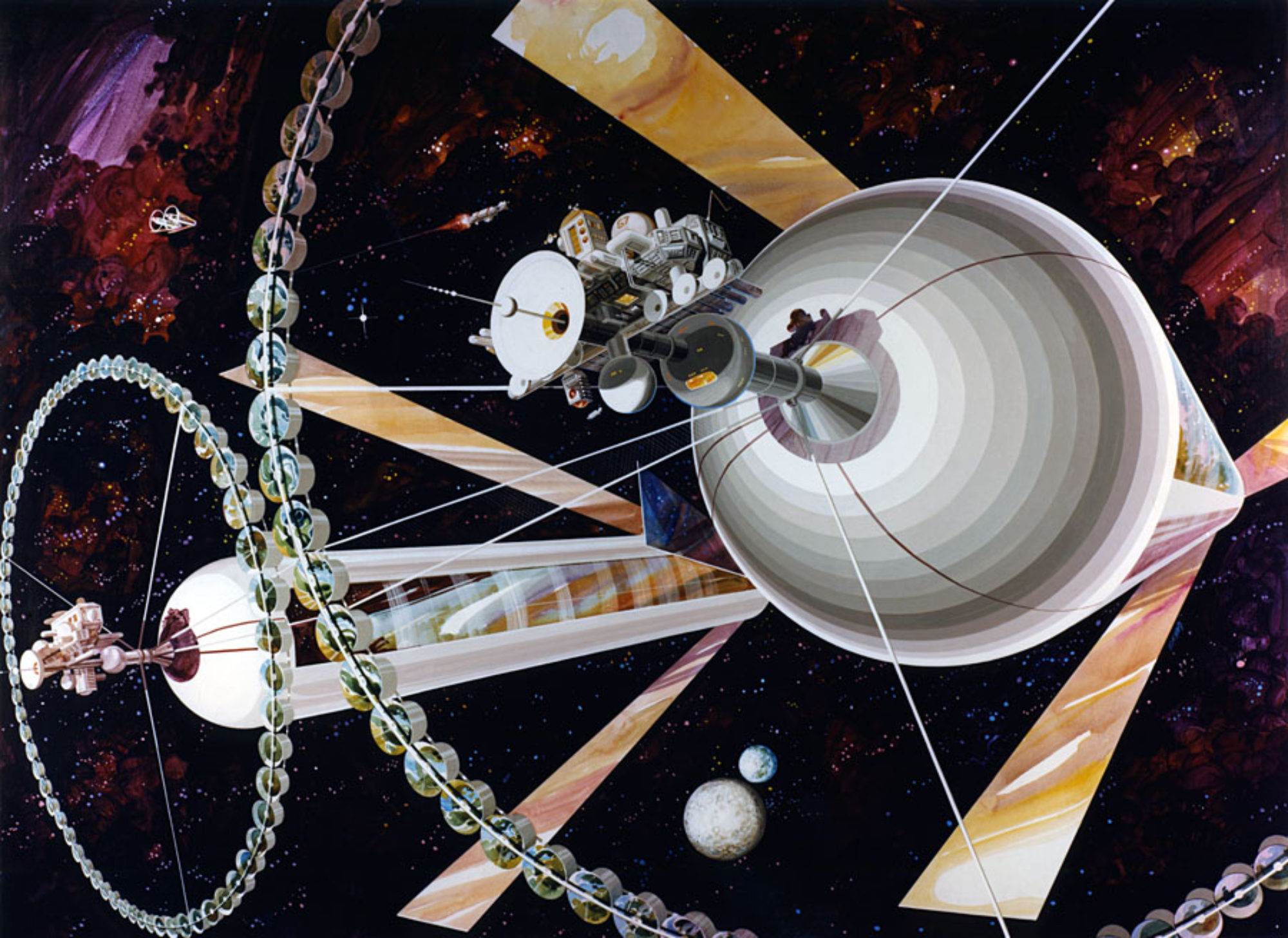
Lunar space settlements will need supplies of water for life support and rocket fuel in the coming water economy in cislunar space. Given how expensive it is to launch water out of Earth’s gravity well, mining the liquid gold in situ on the Moon makes the most economic sense. Until recently, it was thought that most of the water on the Moon was trapped in the permanently shadowed regions (PSRs) in craters near the poles. Although recent data from the Indian Space Research Organization’s Chandrayaan-1 mission has found evidence that water and hydroxyl is more wide spread across all latitudes, the icy deposits in the PSRs may be more concentrated and readily accessible then that bound up in regolith away from the poles.
A team of researchers* in the UK and Italy have developed a lunar rover capable of mining for ice in PSRs. In a paper in Acta Astronautica they describe their approach using an innovative power source, a Radioisotope Power System (RPS) using Americium-241 (241Am). One of the problems for ice mining in a PSR is that by definition, the crater floors never see sunlight and they are as cold as 40o K. Solar powered mining equipment would be severely challenged in this environment as its batteries would have to be frequently recharged at the crater rim and the extreme cryogenic temperatures would affect performance. Rovers utilizing an onboard RPS could operate autonomously and continually in a PSR. 241Am has a half life of 432 years enabling decades of power output without the need to refuel. It is the preferred isotope in Europe because it can be economically separated from spent nuclear fuel produced in civil reactors.
The current state of the art for ice mining methods are either mechanical or thermal. Mechanical processes require beneficiation of excavated regolith by either pneumatic, magnetic or electrostatic separation. SSP has covered one such mechanical extraction technique called Aqua Factorem proposed by Philip Metzger at the University of Central Florida. These techniques require prior assessment of the regolith so that the appropriate type of separation method can be tailored to the specific ice content.
Thermal mining employs various ways of heating the regolith to induce sublimation of the icy deposits directly to water vapor which is then refrozen in cold traps for collection. One method is direct solar heating perfected by George Sowers at the Colorado School of Mines. Heating can also be induced by electricity, microwaves or, as proposed by the authors, radioisotope decay heating. Such methods can skip the step of characterizing the regolith for ice content prior to mining operations.
The rover described in the paper is innovative in that the RPS, which would generate a total of 400W, not only provides electrical power, its waste heat could be utilized for ice mining. The electrical power would be generated by thermal input to a Stirling convertor with an efficiency of ∼20% to produce ∼80W of electric power leaving ∼320W for the mining operations. A related program in Europe is developing such a Stirling convertor using 241Am for deep space applications.
Here’s how it works: waste heat from the RPS is directed to a plate in a sealed enclosure lowered beneath the rover to sublimate icy deposits in the lunar regolith. The extracted water is directed to the cold trap via a pressure differential in the sealed environment. A PSR ice mining campaign would be divided into four Phases. Phase I (Roving to Ice Deposit) starts with the rover operating on battery power to traverse the PSR surface to the target area. Once an ice deposit has been located Phase II (Isolating ICE Deposit) would situate the rover over the deposit and lower a sealing enclosure over the deposit beneath the rover. Phase III (Volitile Extraction) directs waste heat from the RPS to the plate initiating sublimation of the ice in the regolith for collection in the cold trap. This phase lasts about 2 days. Finally, Phase IV (Separation from Deposit) raises the sealing walls after full extraction of the ice deposit. The rover is then ready to move on to the next target area and repeat the process.
Validation of the heat transfer and thermal management was caried out using 3D Finite Element Methods on the rover design and anticipated environment conditions, i.e. the temperatures of the primary rover elements including the sublimation plate, cold trap, and volatiles tube. Four simulations of ice mining were conducted under varying conditions of icy regolith volumetric content ( 1.0, 5.0, and 10.0%, respectively). The experiment showed that most element temperatures were stable for each ice content scenario.
From the results of the study, the researchers conclude that “…it is feasible to extract ice in a PSR crater of the lunar poles using the waste heat from a RPS radiated downwards to the icy Lunar regolith by a sublimation plate. Ice deposits within the regolith can be successfully sublimated, volatiles can be collected in a pressure-controlled environment, directed to a cold trap, and captured.”
____________________________________
* Authors of the paper Ice-Mining Lunar Rover using Americium-241 Radioisotope Power Systems : Marzio Mazzotti 1 2, Hannah M. Sargeant 1, Alessandra Barco 1, Ramy Mesalam 1, Emily Jane Watkinson 1, Richard Ambrosi 1, Michèle Lavagna 2
1 University of Leicester, Space Park Leicester, 92 Corporation Road, LE4 5SP Leicester, UK
2 Politecnico di Milano, Piazza Leonardo da Vinci, 32, 20133 Milano MI, Italy



